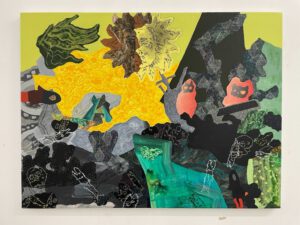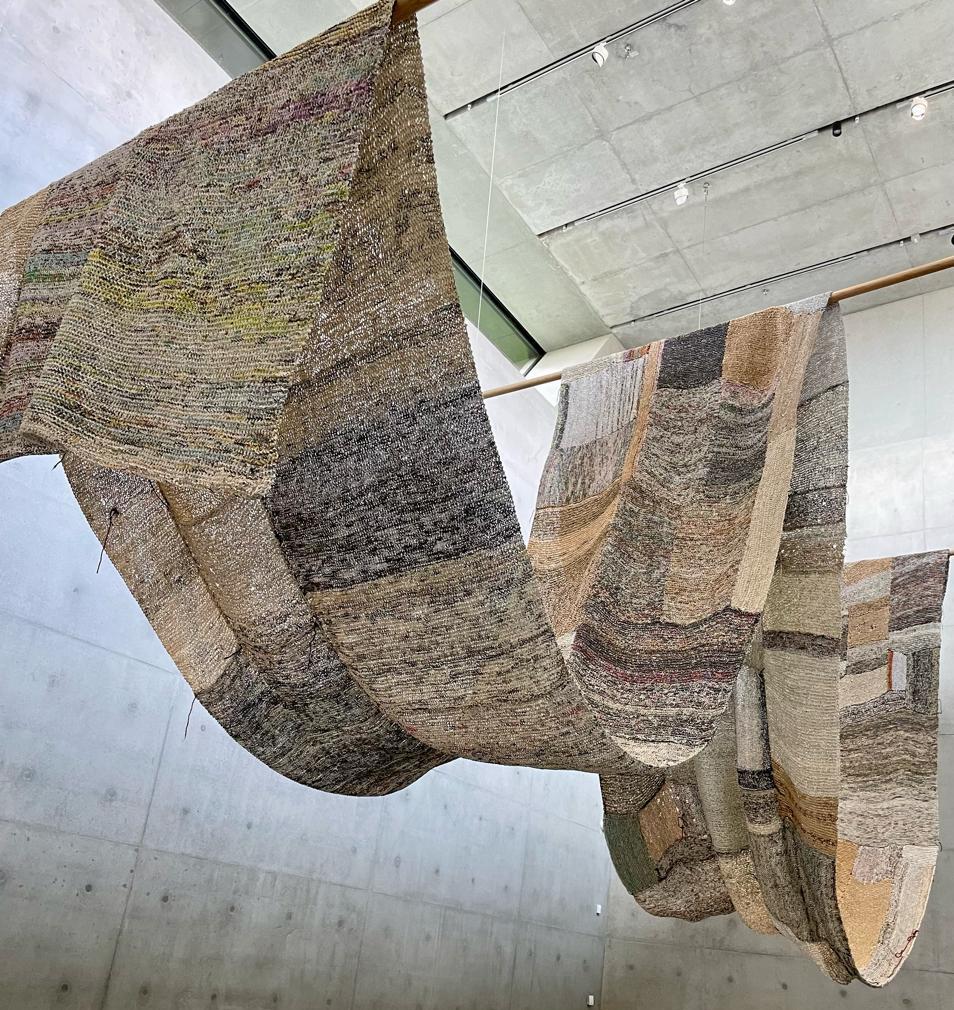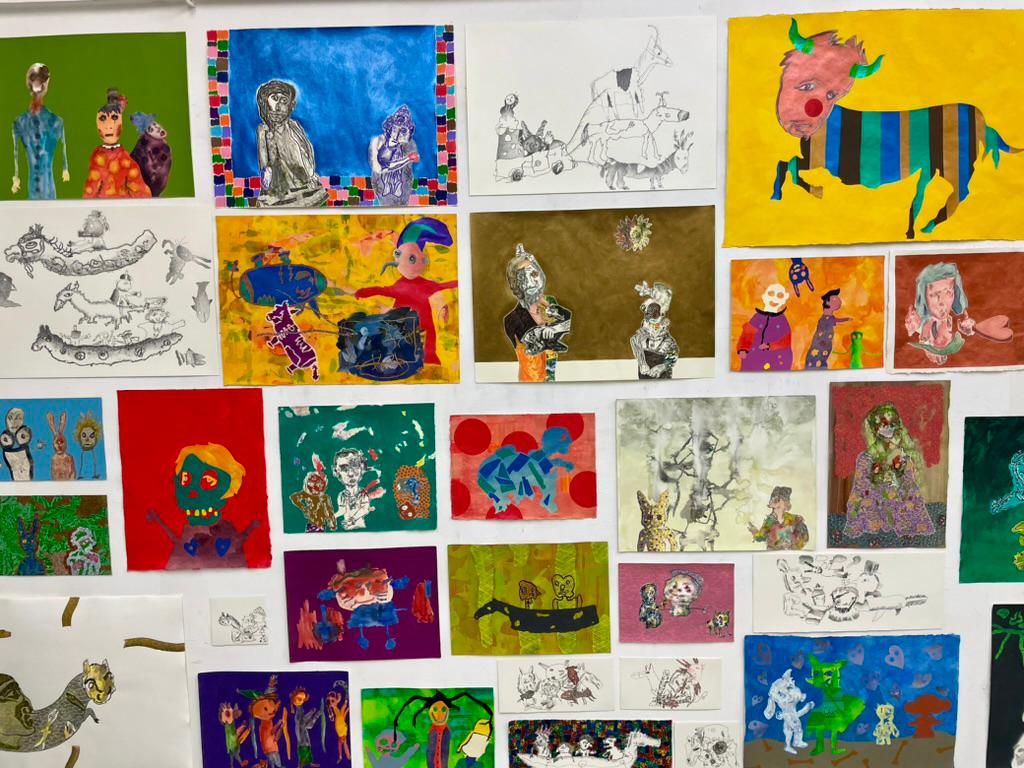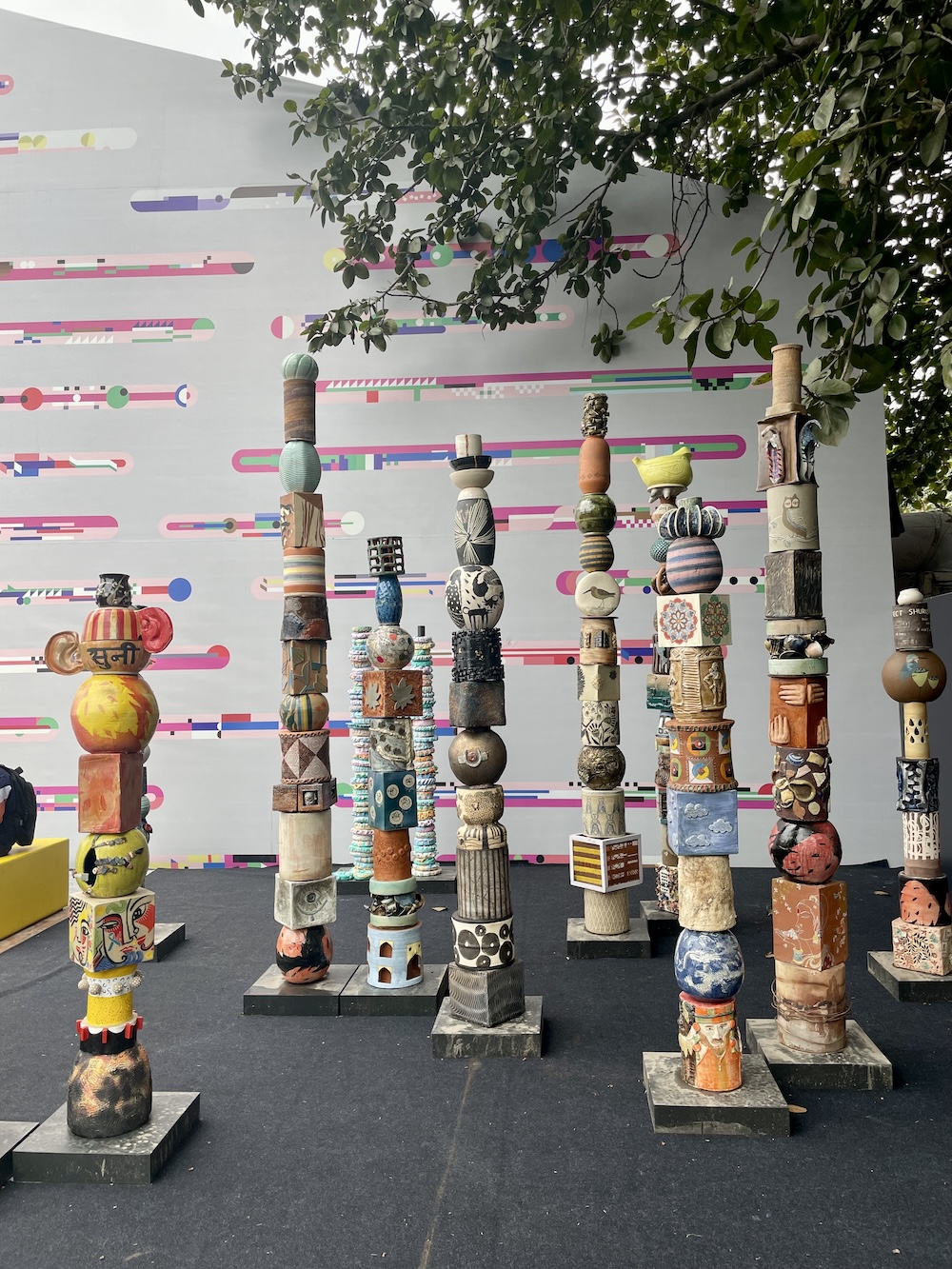AS: What is art, Michele Melillo?
MM: Art always expresses the same thing but looks different over the centuries. Some people say that art is communication – but besides the beautiful alliteration, art can communicate crap. And that’s where it gets exciting to look for the differences – what makes a good painting?
AS: That’s a good question – let’s approach it this way: How do you distinguish between good and bad paintings?
MM: For me, it has a lot to do with the viewing experience. You must have seen a lot and walked your feet flat in museums and galleries until you have developed something like visual criteria. Those criteria are not only about the quality of craftsmanship but rather about liveliness or even spirit. If you don’t forget a picture after you’ve left the exhibition, if it irritates you so much that you think about it even longer – for me, that’s a sign of great art!

AS: Are there paintings that you return to again and again?
MM: Yes, of course. I must have seen the Isenheim Altarpiece eleven times. And I also make my rounds in the Alte Pinakothek: St. Erasmus von Grunewald, the Rembrandt paintings and Rubens sketches, and not to forget, of course, Titian’s Coronation of Thorns – one of his significant works. Abroad, in the Prado: it’s Velazquez. El Greco, Goya – that’s where I always return – whether in person or in my mind.
AS: Have these works influenced your artistic career?
MM: Certainly. But there’s one more artist I’d like to mention: Gustave Moreau. A symbolist, working about the same time as Gustave Courbet, but not as well known today. His former home in Paris is a museum today. And the first time I was there, all I saw in the paintings was „mud“, but the second time a whole cosmos opened up to me. Every picture looks different and is painted differently! So many artists have stolen from his work: Picabia, Polke, even Baselitz’s early watercolors look almost the same.

AS: You once said that a problem arises in every picture you paint. And your task is to solve the problem. What do you mean by that?
MM: I often start painting, and it goes well for a while. The figures fit, also the colors – but then a problem occurs! Then I need to change, adapt, improvise. I often think of a story by Francis Bacon. He wanted to paint a human being, but it turned out to be half an ox in the end. Starting a painting, you certainly have an idea about color and figures, and then you start. When Gerhard Richter was asked when are your paintings finished? He said: when the picture looks good. It’s that simple and that complex.
AS: How do you know when your paintings look good?
MM: When it doesn’t bother me anymore. Then I often forget about it – that’s cruel, but also beautiful. If something doesn’t work for me, I think about it and work on it until it does.
Deutsche Version:
Sechs Fragen zur Kunst an … Michele Melillo
AS: Was ist Kunst, Michele Melillo?
MM: Kunst meint immer dasselbe, sieht aber über die Jahrhunderte immer anders aus. Manche sagen ja, Kunst ist Kommunikation – aber neben der schönen Alliteration bedeutet das außerdem: Kunst kann natürlich auch Mist kommunizieren. Und da wird es spannend, nach dem Unterschied zu suchen – was macht denn ein gutes Bild aus?

AS: Das ist eine gute Frage – gehen wir sie mal so an: Gibt es Bildern, zu denen Du immer wieder zurückkehrst?
MM: Ja, natürlich. Den Isenheimer Altar habe ich sicher elfmal gesehen. Und auch in der Alten Pinakothek gehe ich meine Runde: Der heilige Erasmus von Grunewald, die Rembrandt Bilder und Rubens-Skizzen und nicht zu vergessen natürlich auch Tizians Dornenkrönung – eines seiner Hauptwerke. Im Ausland ist es der Prado: Velazquez. El Greco, Goya – da kehre ich immer wieder zurück – ob jetzt an den Ort oder auch nur in Gedanken.

AS: Haben diese Werke Deine künstlerische Arbeit beeinflusst?
MM: Sicherlich. Aber da möchte ich noch einen Künstler erwähnen: Gustave Moureau. Ein Symbolist, ungefähr die gleiche Zeit wie Gustave Courbet, aber heute lange nicht so bekannt. Sein ehemaliges Wohnhaus in Paris wurde zum Museum umgestaltet. Und als ich das erste Mal da war, habe ich in den Bildern nur „Matsch“ gesehen, aber beim zweiten Mal hat sich ein ganzer Kosmos eröffnet. Jedes Bild sieht anders aus, ist unterschiedlich gemalt! Da haben auch viele Künstler geklaut: Picabia, Polke, auch die frühen Aquarelle von Baselitz sehen fast genauso aus.
AS: Du hast mal gesagt, bei jedem Bild, das Du malst, tritt ein Problem auf. Und Deine Aufgabe ist dann, dieses Problem zu lösen. Was meinst Du damit?
MM: Ich fange oft an zu malen und es läuft gut eine gewisse Zeit. Die Figuren passen, auch die Farben – aber dann tritt ein Problem auf! Da muss ich verändern, anpassen, improvisieren. Da denke ich oft an eine Geschichte von Francis Bacon. Eigentlich wollte er einen Menschen malen, am Schluss wurde ein halber Ochse draus. Man hat anfangs sicherlich ein Gefühl für Farbe, für Figuren und dann fängt man an. Gerhard Richter wurde mal gefragt, wann sein Bild fertig ist. Dann hat er gesagt: wenn das Bild gut aussieht. So einfach und so schwer ist es.
AS: Woher weißt Du, wann eines Deiner Gemälde gut aussieht?
MM: Wenn es mich nicht mehr stört. Dann vergesse ich es auch oft – das ist grausam, aber auch schön. Wenn mir etwas nicht gelingt, denke ich so lange daran und arbeite, bis es klappt.
AS: Letzte Frage: Wie beurteilst Du in der Malerei Qualität? Wie unterscheidest Du zwischen guten und schlechten Bildern?
MM: Für mich hat das viel mit Seherfahrung zu tun. Man muss viel gesehen haben, sich die Füße in Museen und Galerien platt gelaufen haben, bis man so etwas wie visuelle Kriterien entwickelt. Das hat natürlich nicht nur mit handwerklicher Qualität zu tun, sondern vielmehr mit Lebendigkeit oder auch Geist. Wenn Du ein Bild nicht vergisst, nachdem Du die Ausstellung verlassen hast, wenn es Dich so irritiert, dass Du noch länger daran denkst – das ist für mich ein Zeichen von großer Kunst!






